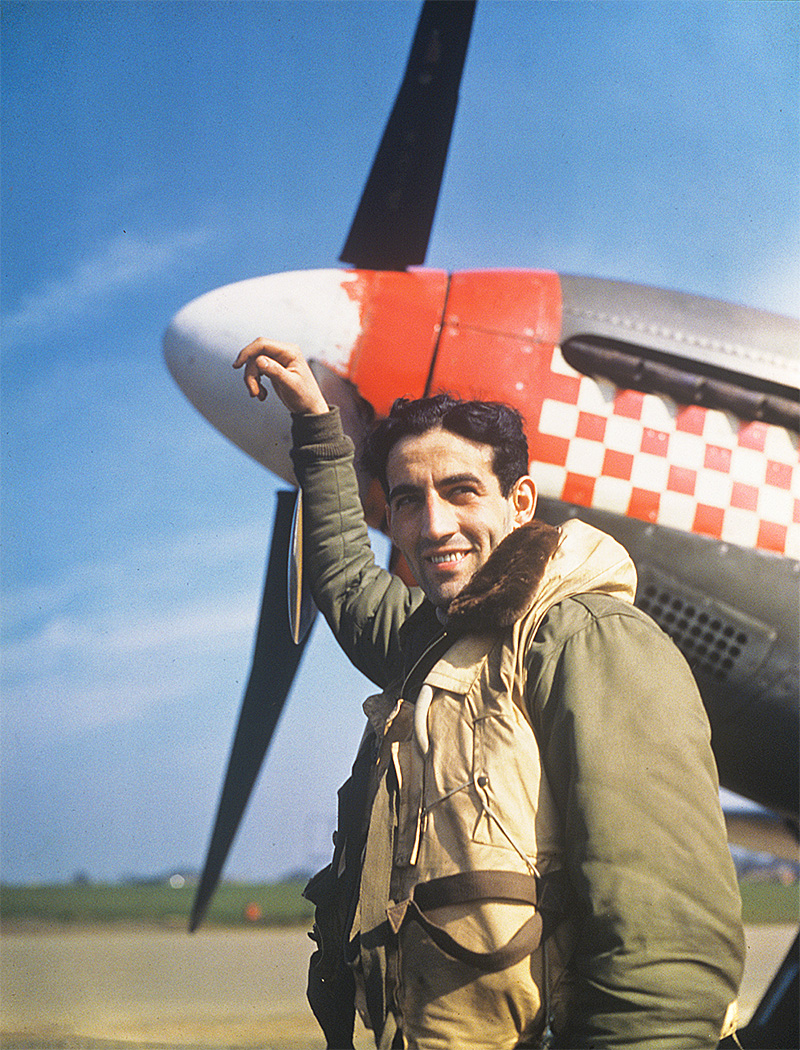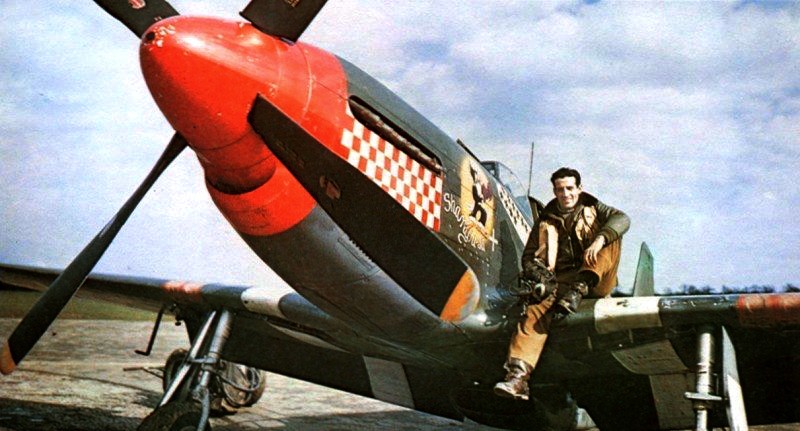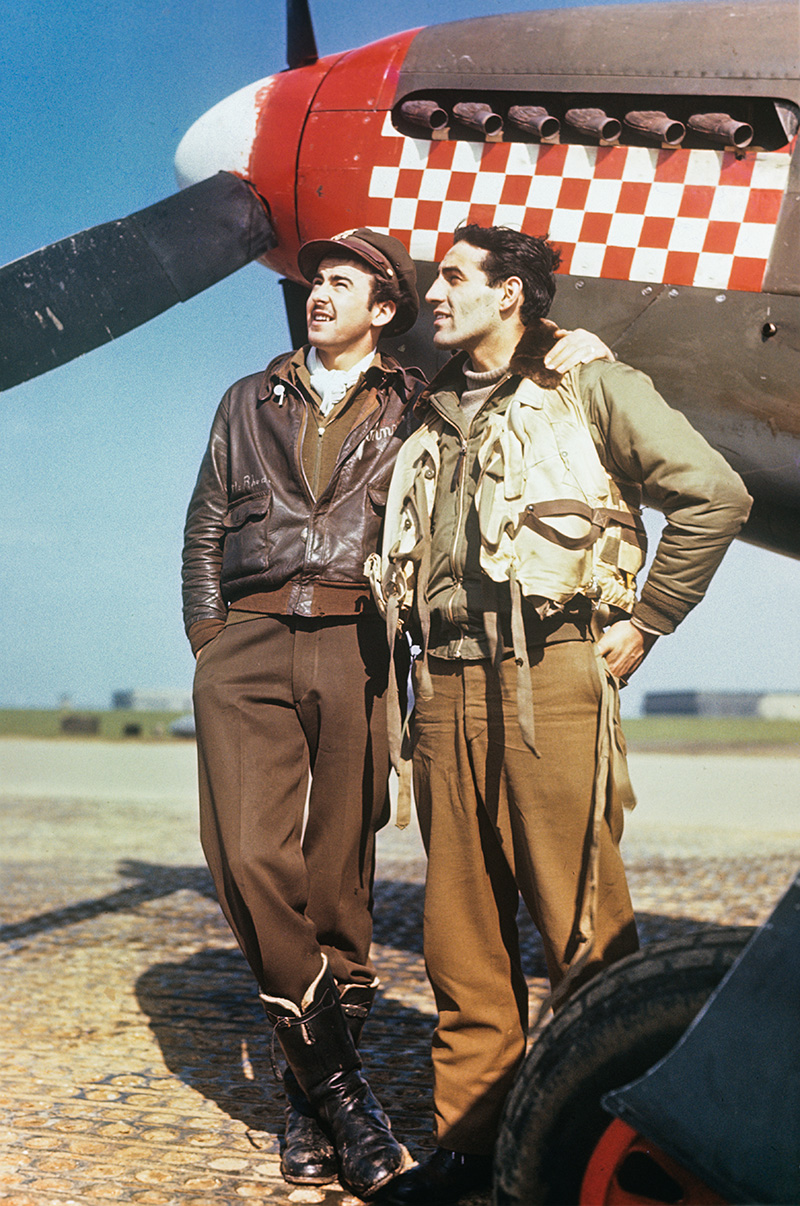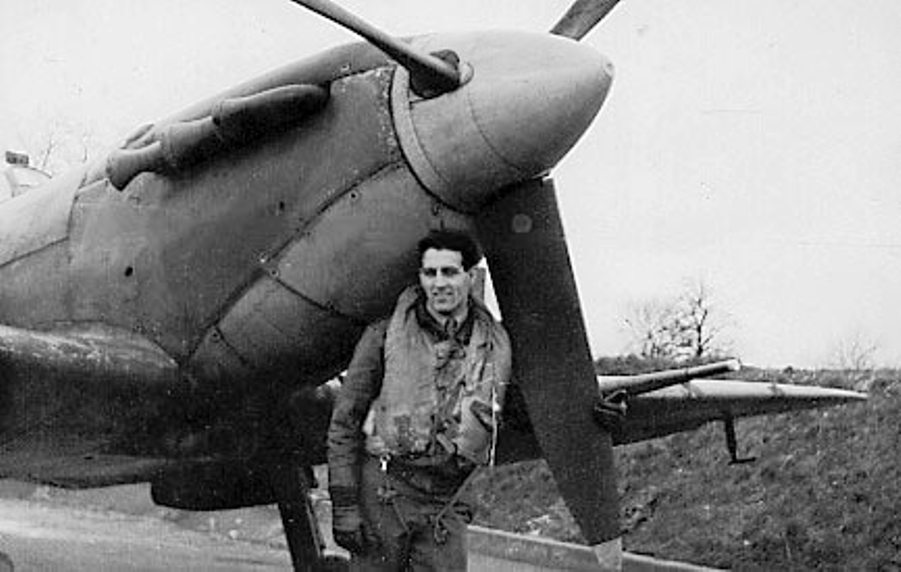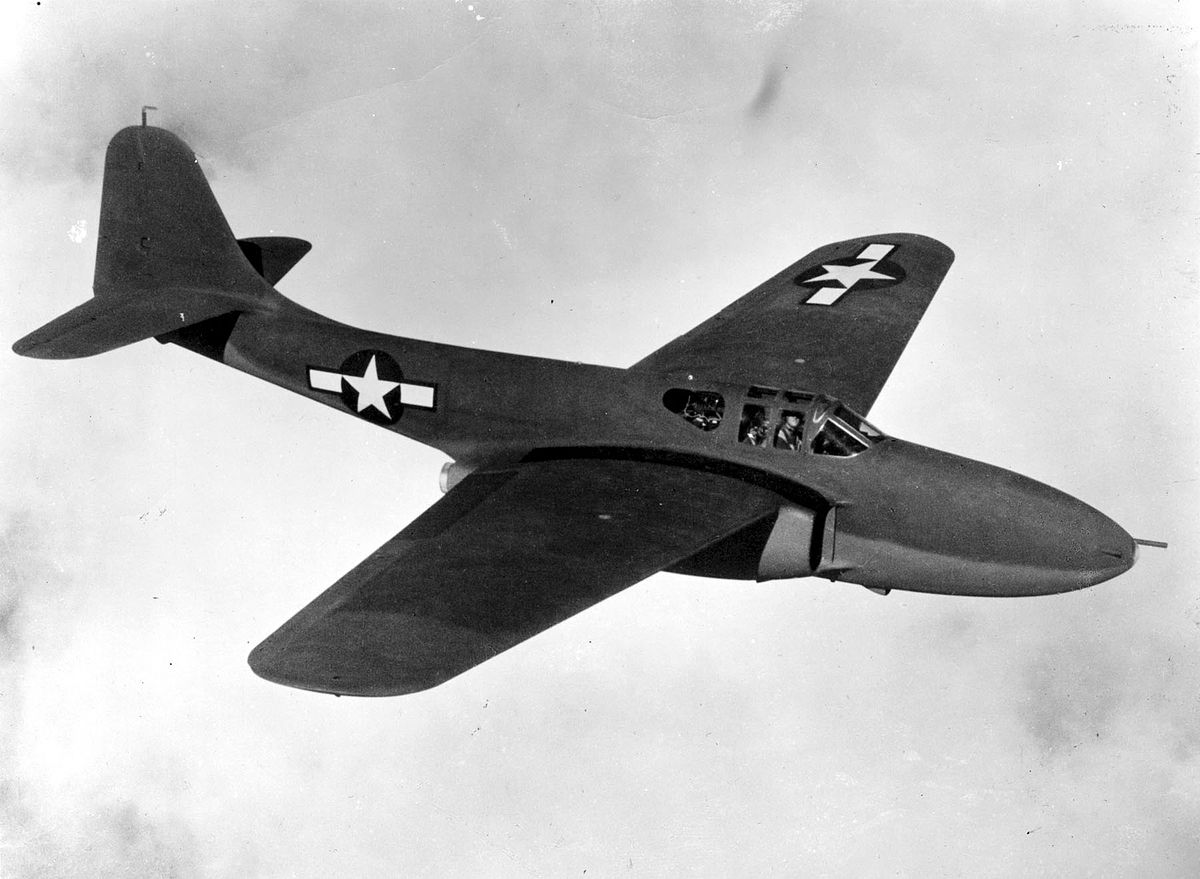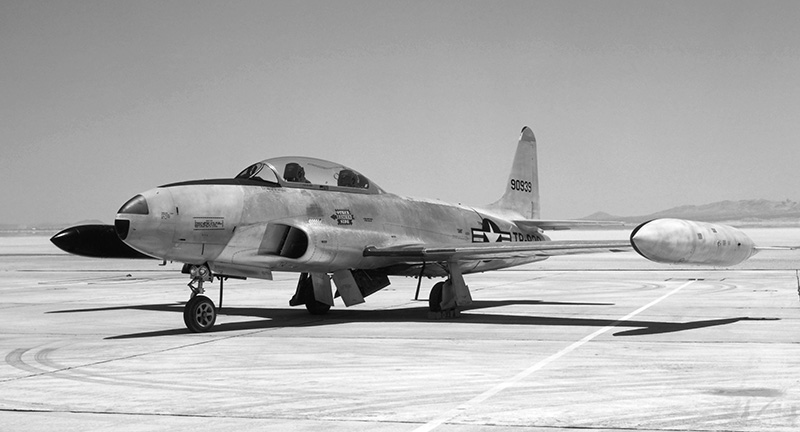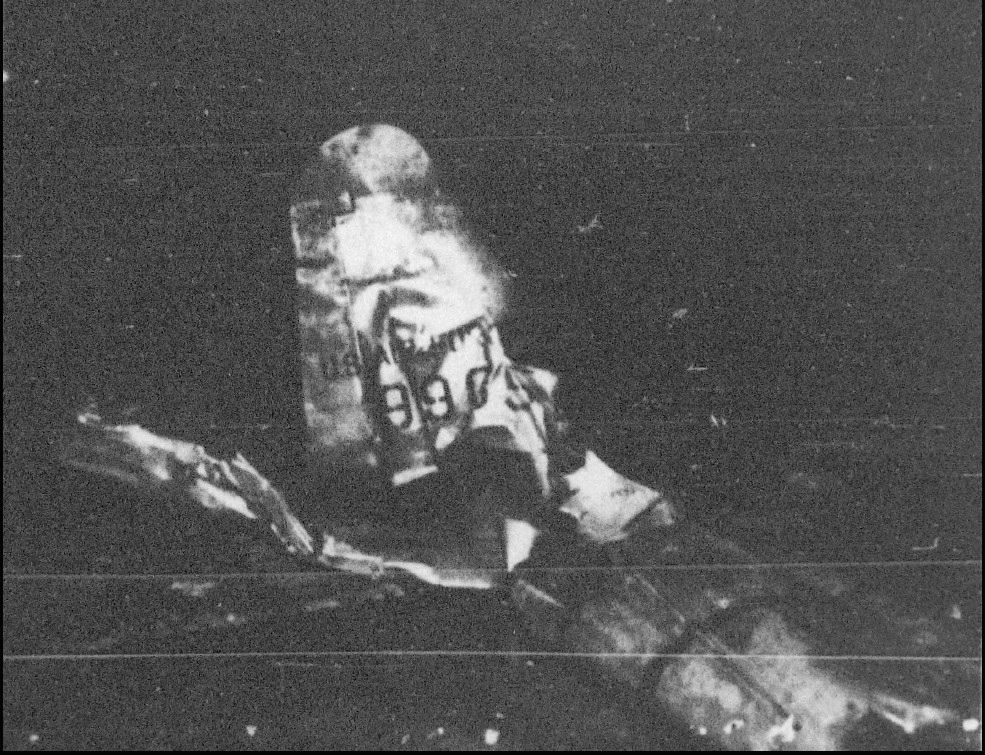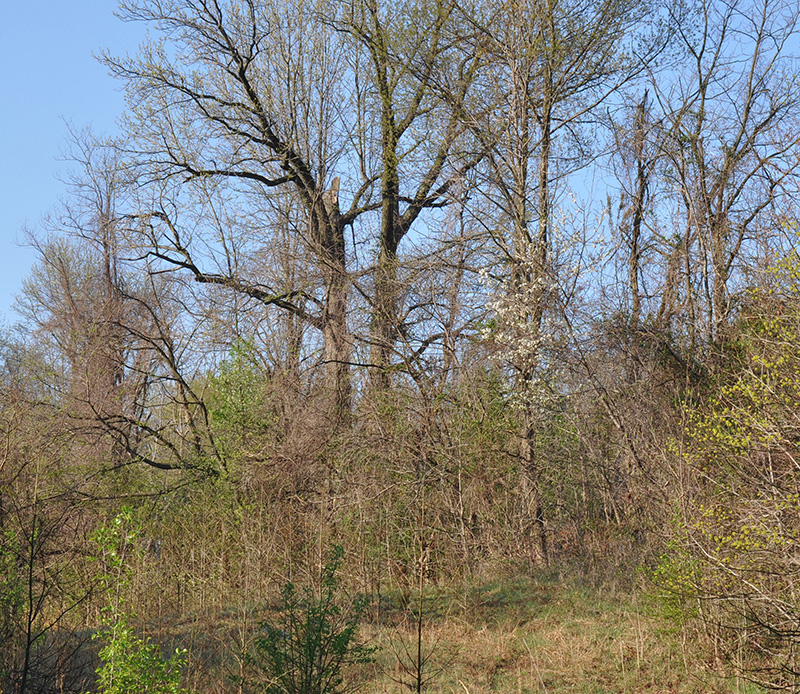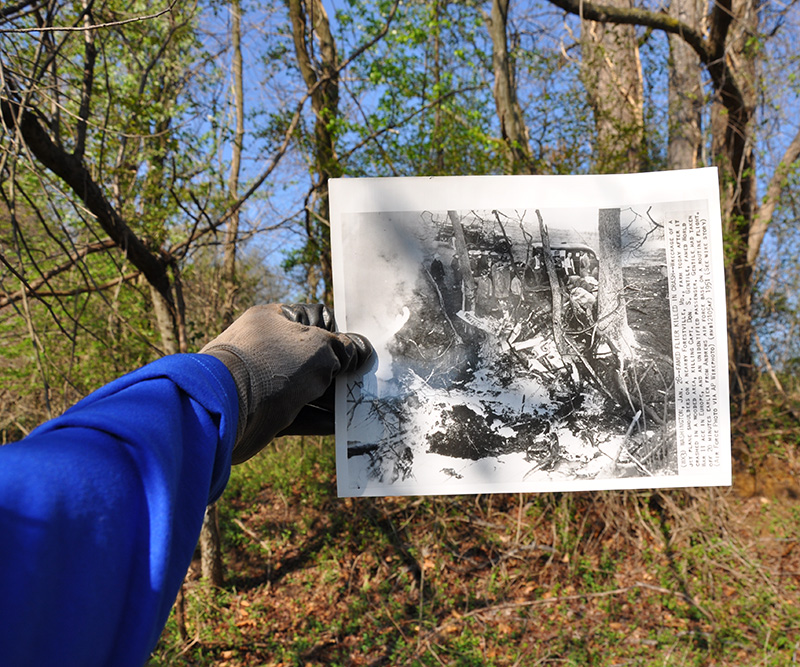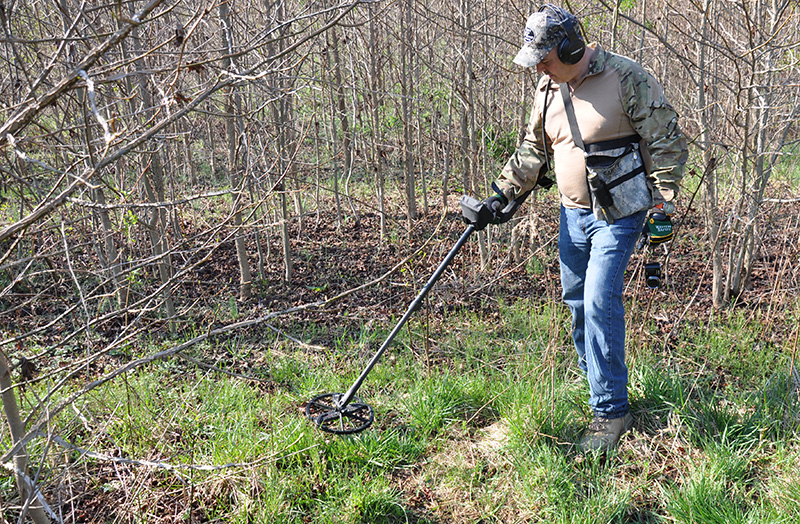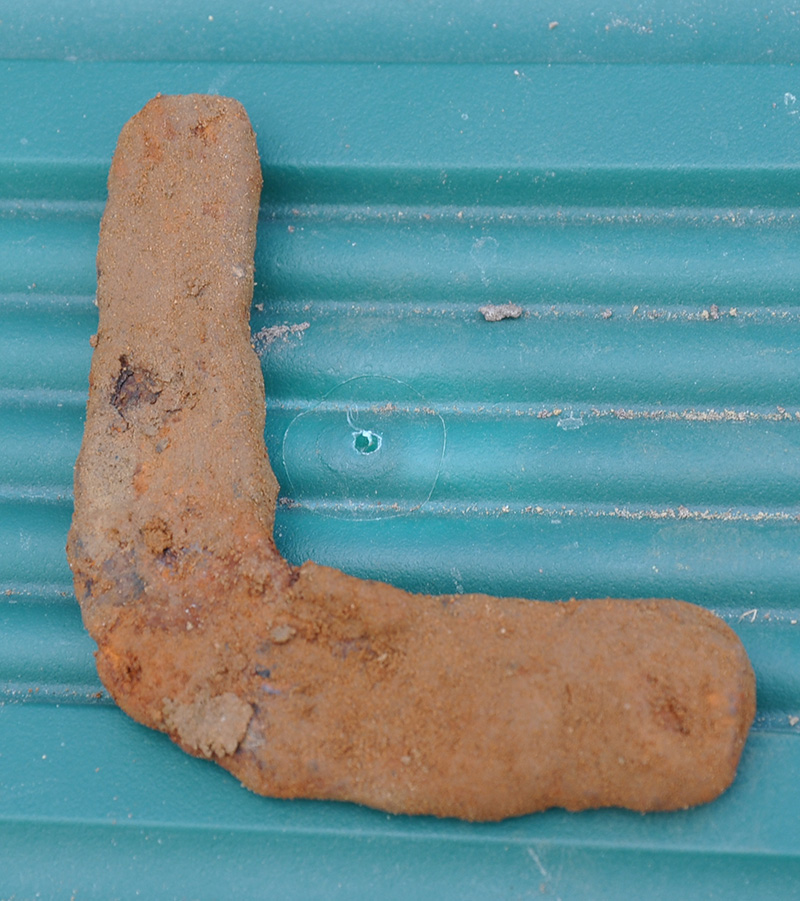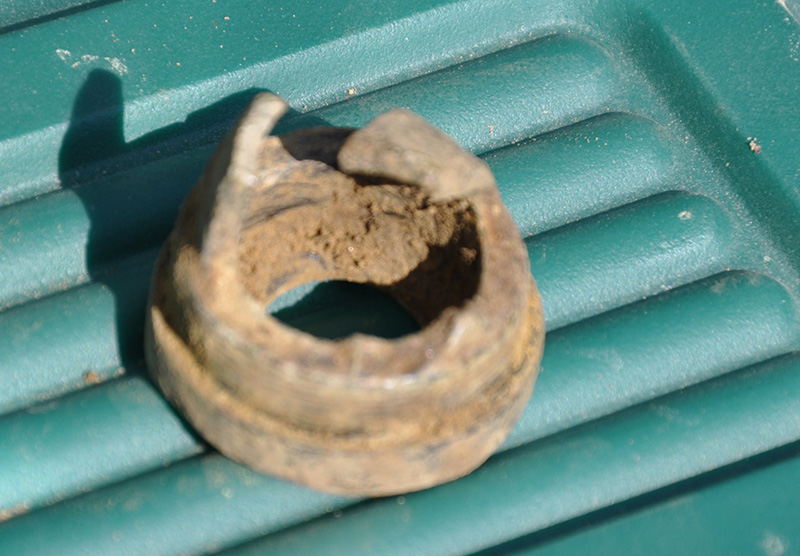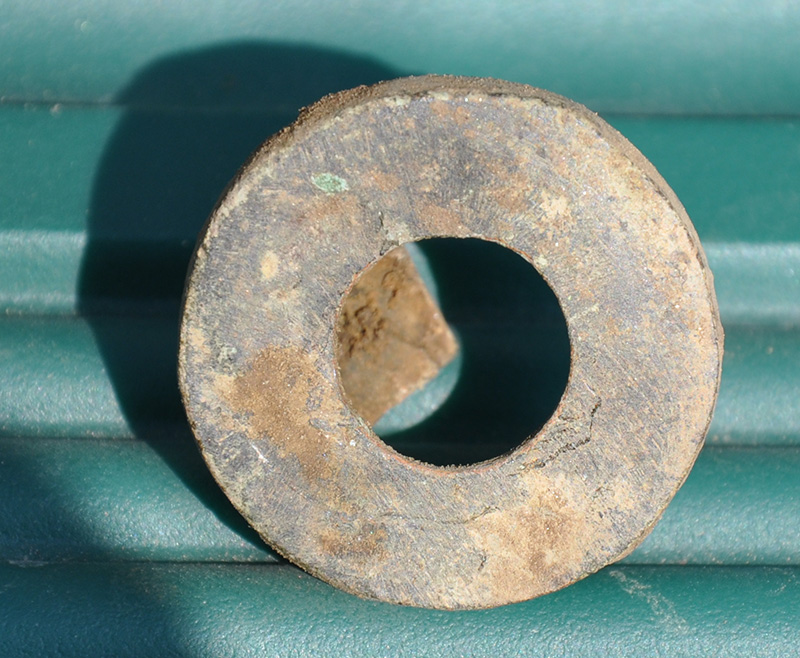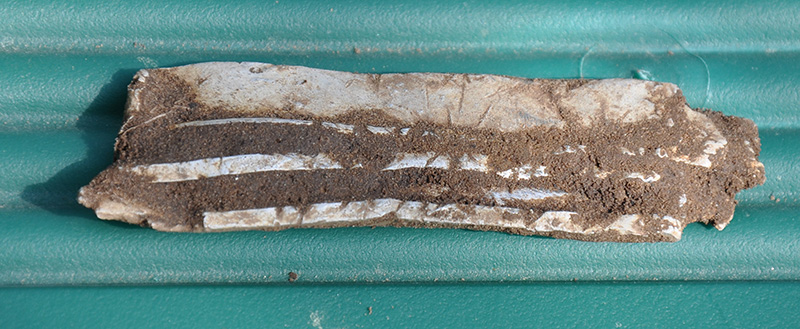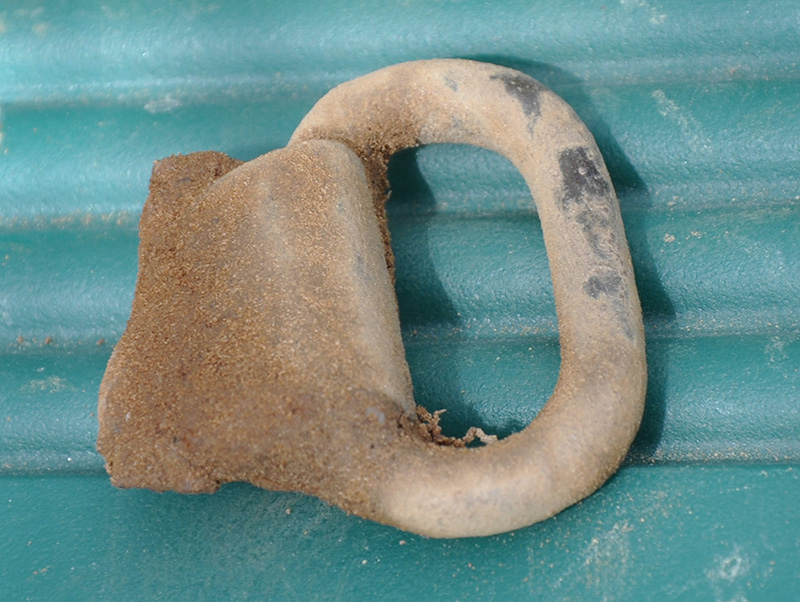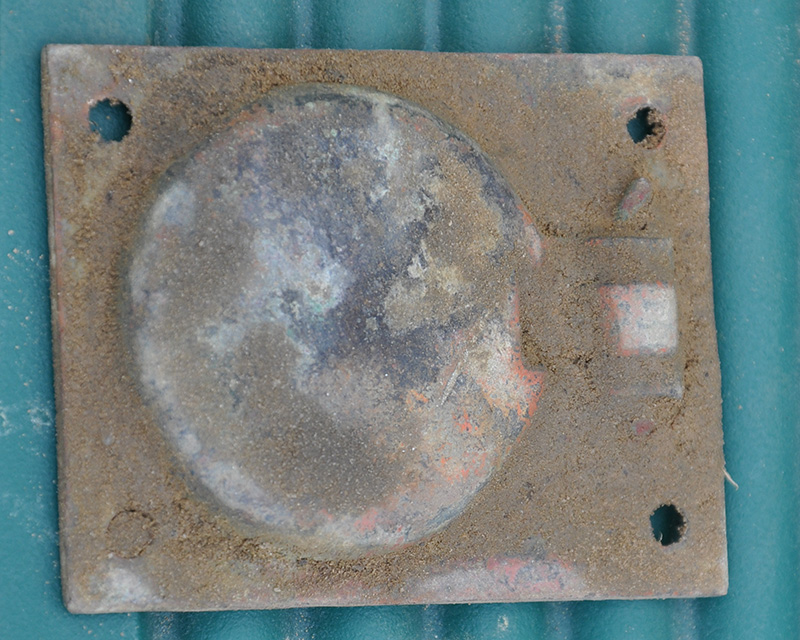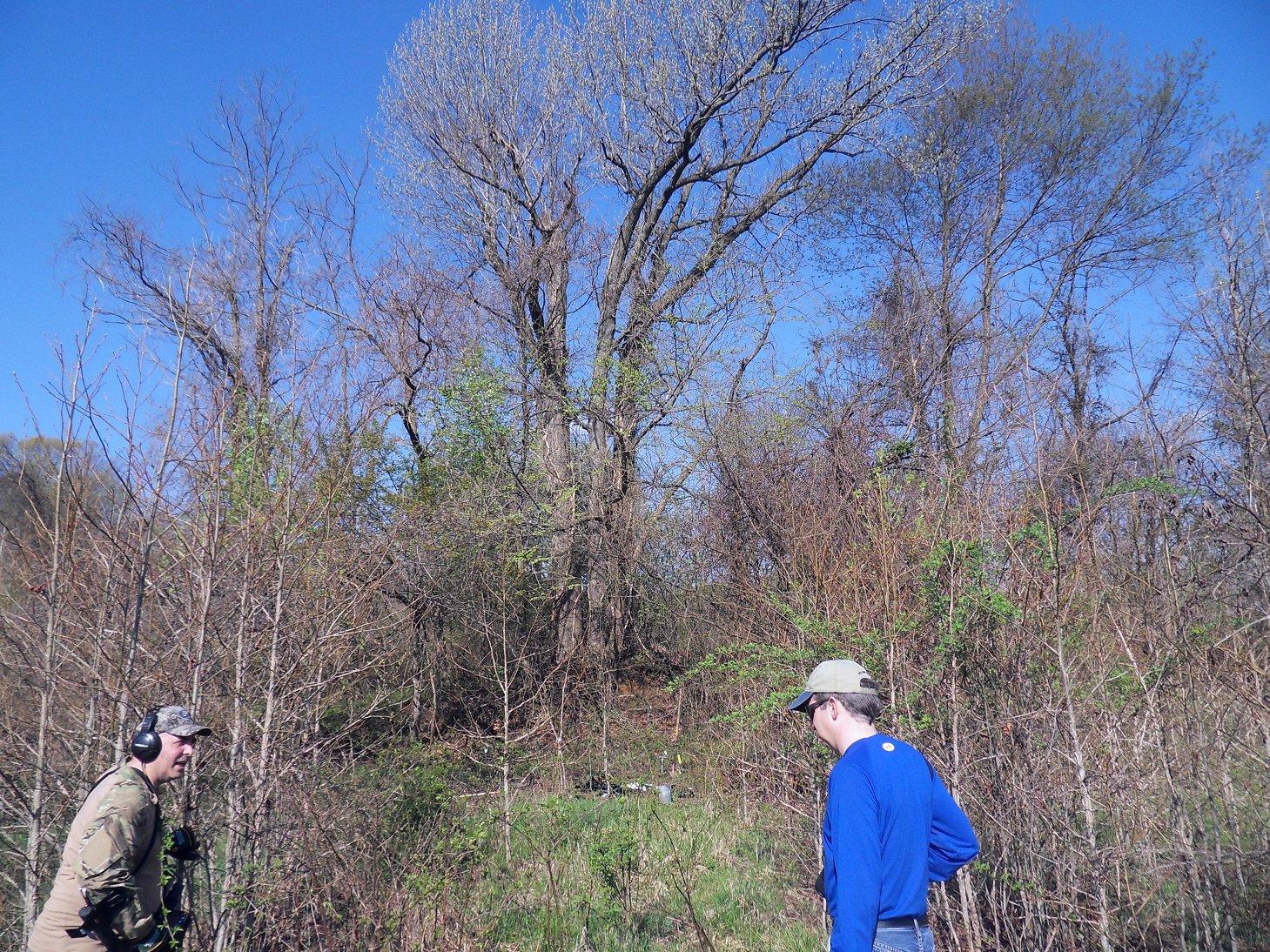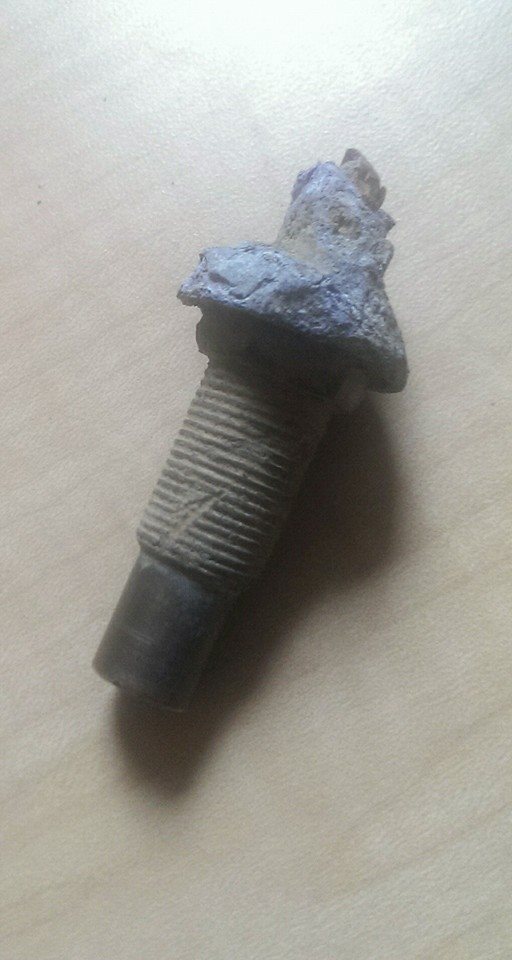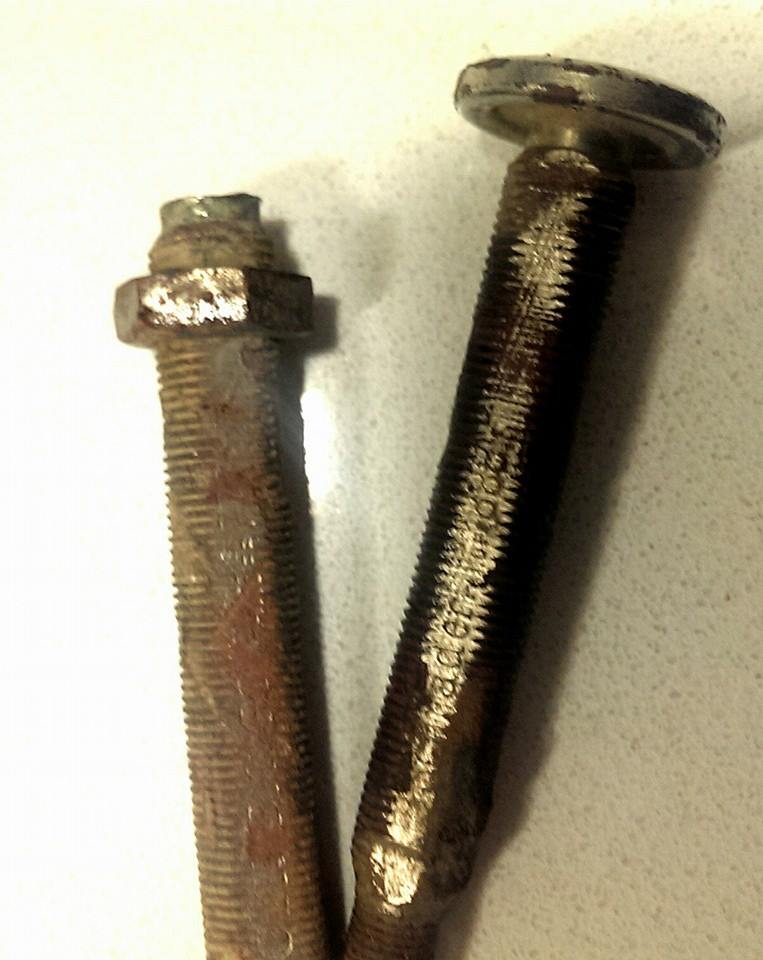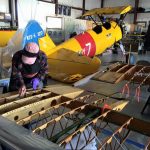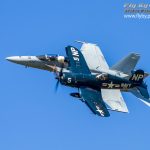This past Thursday marked the 64th anniversary of the tragic accident which claimed the life of legendary WWII fighter ace, Don Gentile. WarbirdsNews contributor, David Cohen, has investigated the causes behind Gentile’s crash, which also took the life of his passenger, Sgt.Gregory Kirsch. He has visited the accident site on a couple of occasions in the past two years, and we thought our readers would be interested in his report.
The Last Flight of Don Gentile
by David Cohen
Don Gentile needs no introduction. Whether known as ‘Captains Courageous’, ‘The Two Man Air Force’, ‘Messerschmitt Killers’, or ‘Damon and Pythias’, the exploits of he and his wingman, John Godfrey, with the 4th Fighter Group are well documented. Less well known are Gentile’s early days in his hometown of Piqua, Ohio, nor those after World War II leading up to his untimely death in 1951. His life still resonates enough with some in Piqua for one resident to make the 8 hour drive to Maryland in the hopes of discovering more about Don Gentile’s last flight.
Gentile was born in Piqua in 1920. He held an abiding passion for flight from early in his childhood, earning his pilot’s license by age 17. Gentile was a daredevil in the air and made sport of several Piqua landmarks, which included flying under the Shawnee Bridge, circling tightly around the spires of St. Boniface Catholic church, and of course buzzing his girlfriend’s home. It was no wonder that Gentile wanted to join the Army Air Force when war broke out in Europe, but at that time they were only accepting college graduates. So Gentile went north to volunteer with the Royal Canadian Air Force in Canada, and from there to the Royal Air Force and the deadly duel with the Luftwaffe over British skies.
After flight training, Gentile received a posting with 133 Squadron, one of the three fabled “Eagle Squadrons”, flying Spitfires from Biggin Hill in England. He scored his first two kills on August 1st, 1942 during the ill-fated Dieppe Raid. On September 29th, 1942, the US Army Air Force formally absorbed the Eagle Squadrons into the nascent 4th Fighter Group where they transitioned onto the much heavier P-47 Thunderbolt. Gentile scored another 2.33 kills before the 4th FG re-equipped with the P-51B Mustang. The Mustang proved to be the perfect mount for Gentile. He and his colorful P-51B nicknamed Shangri-La racked up an amazing 15.5 kills between March 3rd and April 8th, 1944. See a short video clip of Gentile with his Mustang below.
By April 8th, Gentile had become the highest scoring American ace in Europe. Five days later, Gentile was performing for a group of newspaper and newsreel reporters in his Mustang. Gentile made repeated high speed passes for the cameras, becoming more aggressive with each attempt. His old daredevil habits from Piqua had returned in full, though this time his recklessness got the better of him, and he ploughed the Mustang into the mud, destroying it in the process, though somehow wounding only his pride. The 4th Fighter Group’s commanding officer, the equally legendary Don Blakeslee, was so incensed by Gentile’s actions that he grounded him on the spot and sent him back to the USA. For him the war was over…
Upon his return from Europe, Gentile made the obligatory War Bond Tours, flying around the country in a P-51D painted to represent his original Shangri-La. Once the War Bond tours ended, Gentile briefly became a test pilot and gunnery instructor at Wright Patterson Field, in Dayton, Ohio, not far from Piqua. He married Isabella Masdea and started a family. Some time later, Gentile moved to the Washington D.C. area to become an undergraduate student at the University of Maryland, pursuing a degree in military sciences while still attached to the United States Air Force.
In January 1951, Gentile began refresher training on the Lockheed T-33 Shooting Star at Andrews AFB. While Gentile had amassed nearly 4,000 flying hours, only about 20 these were in jet aircraft, and none since 1945. His jet time was mostly in the YP-59 Airacomet, although he did have some in the F-80, the T-33’s forebear. The biggest difference between the F-80 and T-33, besides the rear seat and second set of controls, was the F-80’s greater fuselage fuel tank capacity which held 200 gallons as opposed half that for the T-33.
Prior to his check ride in the T-33, Gentile had to take a written test on the various procedures involved in its operation. He scored about 90 percent on the exam, and an instructor walked him through areas he was unfamiliar with. Among his mistakes on the questionnaire were the procedures for re-starting the jet engine in flight. Both the difference in fuselage tank fuel capacity between the F-80 and T-33 as well as the “air start” procedures would loom large in Gentile’s final flight.
Gentile flew familiarization flights on January 24th and 25th with the instructor pilot in the rear. Gentile’s flamboyant flying behavior again showed itself on this hops, as he dropped his altitude below 1,000 feet at times. He also buzzed his home in nearby College Park, Maryland, much to the consternation of the instructor pilot. Gentile was scheduled to fly on Saturday, January 27th, but his T-33 was unserviceable. It would not be ready until the following day.
Sunday, January 28th, 1951 was an unusually warm day for the region, with temperatures around 50°F. Gentile returned to Andrews AFB to continue his familiarization flights in T-33A serial 49-905. Captain Ray Woods sat in the rear seat on the first flight. The T-33 taxied out and took to the sky, only to return 15 minutes later. Gentile indicated that several cockpit instruments and the radio were not operational, but Sgt. Baron, the plane’s crew chief, pointed out that the circuit breakers needed resetting. Gentile indicated to Baron that he understood the circuit breakers were not to be reset until after landing, but this was apparently not the correct procedure. When Baron pushed in the circuit breakers, the instruments began working again. He then began servicing the plane to prepare it for another flight, which mostly consisted of topping up the tanks with jet fuel. Captain Woods, however, declined to fly with Gentile on the subsequent flight.
Gentile returned to his Shooting Star about 25 minutes later and settled into the cockpit. Twenty year old Sgt. Gregory Kirsch, a control tower operator at Andrews, walked up to the legendary ace and asked if he could ride in the rear seat. Gentile agreed, so Kirsch went about getting the necessary permissions, clearances and gear for the flight. Sgt. Baron and his assistant Sgt. Devol helped Kirsch into the rear cockpit and went over some of precautions and procedures he had follow during the hop.
Gentile started up the T-33 and taxied to the runway, taking to the air at about 3:05 PM. He made two circuits around the airport at fairly low altitude and then disappeared from view to the northeast. It would be the last time anyone would see Gentile or Kirsch alive.
While flying around northeast of the base, the T-33’s J33 engine flamed out. Gentile began gliding back in the general direction of Andrews. Despite his efforts, he was unable to restart the engine, and his already low altitude was getting squeezed further by a steady descent while facing rising terrain. It was at this time that Gentile spotted a flat clearing to his left so he banked sharply in an attempt to reach it. The severity of this turn coupled with his still declining altitude, forced the T-33’s left wing to clip a line of trees, which hurled the trainer downward at a 50 degree angle into the ground. The following explosion and fire consumed much of the aircraft. Gentile and Kirsch never had a chance.
A pillar of black smoke came to the attention of the Andrews controllers at about 3:18 PM. They asked the crew of a Navy P2V Neptune on final approach to investigate. The first Neptune circled the site but could not determine the cause of the fire. A second P2V headed to the site and they concluded that it was indeed the result of an airplane crash. The crash bells at Andrews rang loudly and fire equipment raced to the site. A third Navy plane, a Beech JRB Expeditor had taken station over the crash site and continued to circle it until the fire equipment arrived. The rescue crew found Gentile’s body thrown 15 feet from the wreckage, still strapped into his seat, but the crash impact had forced Kirsch’s body through the bottom of the demolished cockpit.
The tail section from Gentile and Kirsch’s T-33. (crash report photo via David Cohen)
Being late afternoon in January, darkness was already beginning to fall as the rescue team extinguished the fire and recovered the bodies. The Air Force removed most of the major wreckage pieces and returned them to Andrews for the crash investigation. They soon released the bodies to their families for burial. Gentile’s family held a funeral mass for him at St. John Baptist Church in Columbus, Ohio. People jammed both sides of High Street in the city as the funeral procession made its way to Saint Joseph Cemetery in Lockbourne, Ohio, for the burial. Gentile was 30 years old and left behind his wife and three young boys.
The Air Force investigation focused on the engine, as two eyewitnesses indicated the plane was gliding and not under power at the time of the crash. They found no problems with the engine. Damage to the turbine wheel indicated that it was rotating at a very slow speed at the time of impact, confirming that the plane was not under power. The fuel pump provided the best clue. Its gear teeth had worn abnormally and expanded so that they scratched the inside of the pump housing. This could have only been due to a lack of fuel, as without being under load, the pump would have revved well above its design parameters.
The Air Force came to the following conclusions in their report:
- The aircraft crashed as a result of a flame out.
- The flameout was due to improper fuel management by the pilot who had allowed his fuselage tank to run dry, and did not switch to his tip tank, wing tank or leading edge tank in sufficient time to prevent fuel starvation.
- The pilot attempted an air-start after the flameout, but insufficient altitude denied the required time to effect a successful re-start
- The pilot used poor technique by not gaining more altitude immediately after takeoff.
- The pilot was not sufficiently familiar with the T-33 even though his check out had complied with all current Directives and Standard Operating Procedures. The records indicated that the pilot had only 2:50 hours jet time since 1945.
- The current command regulations were written in such a way to allow inadequate checkouts, and therefore needed amending.
The Air Force did change their command regulations and mandated that the checkout questionnaire had to be passed through study rather than using reference material and/or instructor feedback. In this case, Gentile’s apparent lack of knowledge in the differences between the F-80 and T-33 fuselage tank capacity and the air-start procedures, combined with his own penchant for low altitude flying, proved to be a fatal combination for both himself and his passenger.
Back in Ohio, Gentile remained a local legend well over a generation after his death. Greg Covington, a Piqua native, grew up hearing the stories of Gentile’s daredevil flying in and around Piqua as well as his heroics during World War II. As he got older, he worked for a grocery store and would deliver groceries to Gentile’s father. One of the topics that bothered Greg was that there was very little known about how Gentile passed, and even the stories in Piqua often seemed to contradict each other. Greg chose to set about researching the crash and find out as much as he could. He obtained the crash report from the Air Force and began to study it. On slow nights at this job as an overnight X-Ray technologist, he would compare Google earth maps to the crash report maps. Then, one day, the pieces clicked in. The Google Map nearly matched the crash map, and at least from the pictures, it appeared the crash site was undeveloped. Could this be true? Greg needed help from someone local to the site to find out if his instincts were correct.
I had just embarked on my first venture into wreck site investigation, the June 22nd 1957 crash of a Capital Airlines DC-3 in Clarksburg, Maryland, and posted my findings on an internet forum: www.wreckchasing.com. I was intrigued by the Gentile crash site and began looking into it on my own. I found that the information was sketchy and contradictory. I picked a spot that I thought was the most likely area and considered heading out there.
Greg saw my posts about Gentile on the forum and reached out to me. He was convinced that he was very close to determining the crash-site location. On reviewing his research, I agreed with his conclusions, in direct contradiction with my own prior supposition. Now came the tricky part of identifying the current landowner and securing their permission for an on-site investigation. A search of the Maryland land records turned up the landowner, but after repeated attempts I failed to obtain his permission to search the property. I therefore chose to write a letter, explaining to him who we were, what we were looking for and how we would handle ourselves. The letter did the trick, and the landowner gave us access to his land, but with the condition that we had to keep the location confidential.
With permission granted and a letter from than landowner in hand, we could now move along with an actual expedition to the crash site. The big question was when to go. Digging in the winter was out of the question, as the ground would be too hard. If we waited too far into the spring, we would have to deal with something I call the “green explosion”, the time when undergrowth suddenly resurges into life, making any kind of ground search far more difficult. That left us with a search window from roughly the end of March to the beginning of May. To complicate matters further, Greg’s wife was close to giving birth to their second child. We had to wait for the baby’s arrival before making any concrete plans. Based on the baby’s due date, we figured we’d end up heading to the site around the second or third weekend in April.
In the meantime, Greg and I continued to analyze and re-analyze the crash report data. We closely examined the Google Earth maps and kept moving around our probable point of impact. The one thing I learned from my experiences in Clarksburg is that everything is far closer together than it appears on Google Maps and even the crash scene photographs. At night, I even had nightmares that I’d picked the wrong property to obtain permission from. Further discussions with the landowner regarding certain topographical features did, at least, convince me that I got the property location correct.
Greg’s son came into the world on March 22nd. With his arrival, we could now make definite plans to visit the crash site. We picked the second weekend in April. Greg would rent a car, drive the eight hours from Piqua to the Washington, D.C. area on Friday. He and I would meet to go over last minute details and figure out a “battle plan” for the site. We would then head out to the site; each one of us to be joined by one a friend. Greg’s friend Capt. John Stein, also a Piqua native, would come up from Virginia. The visit to the crash site was going to be a one-shot event. There could be no postponement or do-over. We had to be prepared to handle whatever Mother Nature would throw at us.
Mother Nature did try her best to throw us a curveball. Two 90°F days earlier in the week hastened the appearance of the “green explosion”, which was followed by severe storms that could have impacted Greg’s travel plans. All went well on the trip though, and Greg and I met in person for the first time on Friday afternoon. We had one bit of final anxiety though, as we noticed that terrain features were almost identical in an adjoining property, which is typical of this section of Maryland with undulating hills separated by valleys with streams. Could we have erred and picked the wrong property? The evidence, particularly the eyewitness testimony, seemed to support our original analysis, but we just couldn’t be sure until we were actually on site. We did know that the adjoining property was also owned by the same individual, so we could only hope he would let us poke around there if we’d made any mistakes.
Saturday, April 13th dawned chilly, but clear and sunny. One of the landowner’s employees had unlocked the gate to the property and our vehicles bumped down the ill-maintained gravel driveway. It became immediately apparent that everything was far more compressed than we’d seen in the pictures. A quick scan revealed an extraordinary sigh thought – a tree with its trunk sheared off and other limbs growing up around it. A short hike towards the tree revealed the ravine described in the crash report. Greg’s research was near perfect. Instead of spending our morning looking for the point of impact, we found ourselves exactly where we needed to be. I looked at Greg and told him, “Congratulations. You did it!”. We soon found a depression in the earth about 20 yards from the sheared tree. You could draw a line of 45 to 50 degrees straight to the area where the tree was damaged. Our thrill at finding the exact spot was muted with the sudden realization that we were standing on ground where two men had lost their lives.
With the crash site pinpointed, came the exacting work of searching the property with a metal detector and marking the “hits” with flags and recording those locations with a GPS unit. Greg is quite experienced with a metal detector, and had bought a brand new one specifically for the purpose of exploring the wreck site. As we marked each hit, we noticed that a debris field was clearly emerging. Once we had about a dozen “hits” marked, we began the painstaking process of excavating each spot and sorting through the dirt using a pinpoint detector. We did unearth some regular junk, such as pull tabs from old aluminum cans and a couple of coins, but small pieces of airplane were also coming to light from approximately 6 to 7 inches below the surface.
Unfortunately, I had to leave at noon, but Greg and John continued marking and digging for another couple of hours. The day’s work had yielded about a dozen artifacts that were likely from Gentile’s doomed T-33. The expedition was successful enough that a second expedition to the site was planned for the following March.
Our second expedition was much easier with the landowner, as we had earned his trust. Greg had also become quite the virtuoso working the metal detector in the year since our last visit. Once again, Mother Nature threw a curveball at us, including snow the Tuesday prior to the site visit and predictions of heavy rain for the Saturday. Fortunately, the heavy rain held off, and with periodic drizzle and showers, Greg and I managed to recover about another dozen artifacts from the site. The most significant of these artifacts was a nearly intact ignitor that could only have come from a T-33, thus giving us our “smoking gun” and the one artifact that could truly tie in all the others we’d found to having come from Gentile’s ill-fated jet.
We have fully documented all the artifacts recovered and have been moved them to where this story first began, in Piqua, Ohio. They will help tell the final chapter of Piqua’s favorite son, Dominic Salvatore Gentile.







